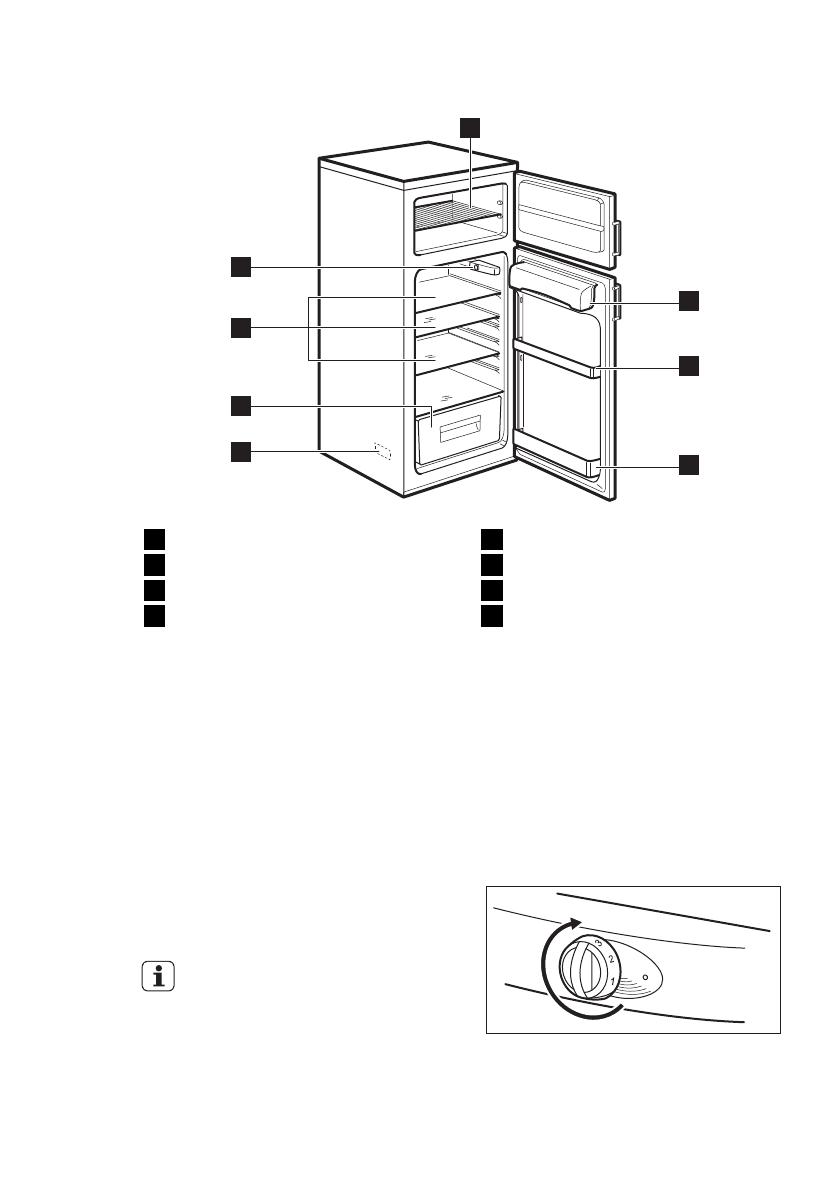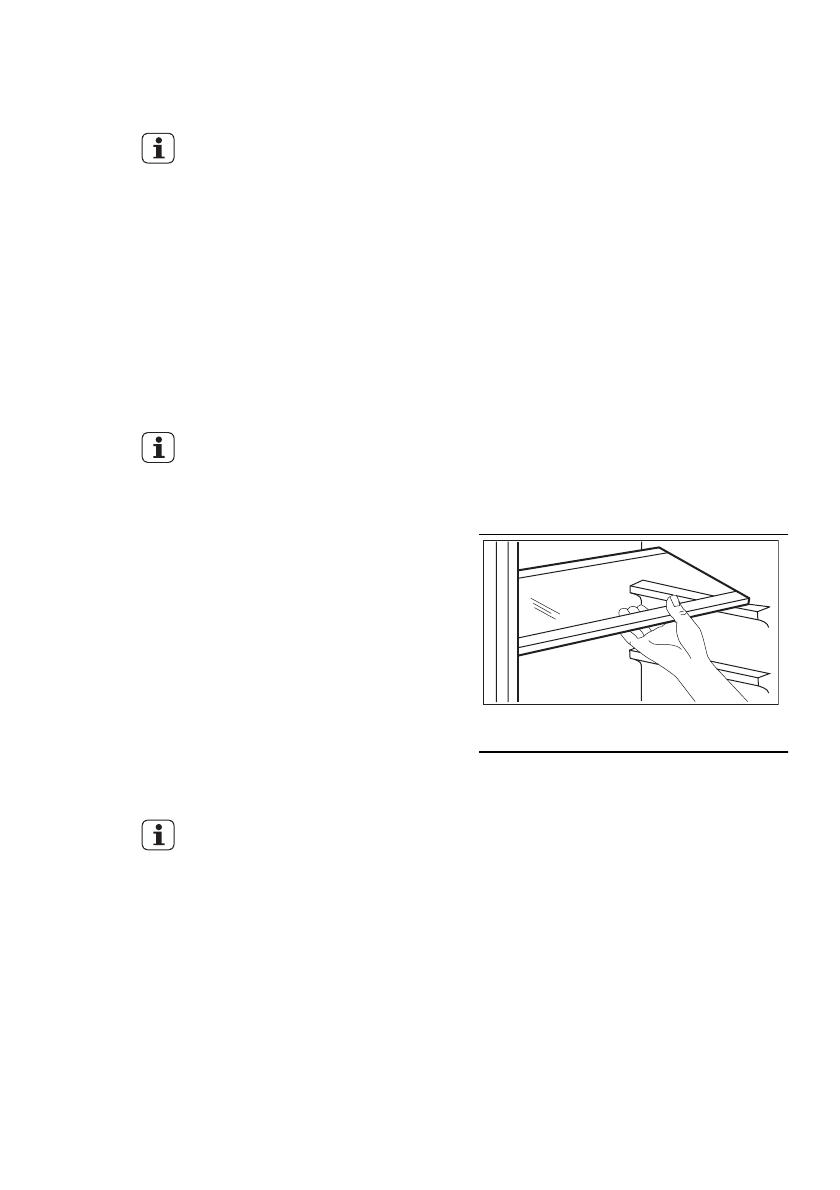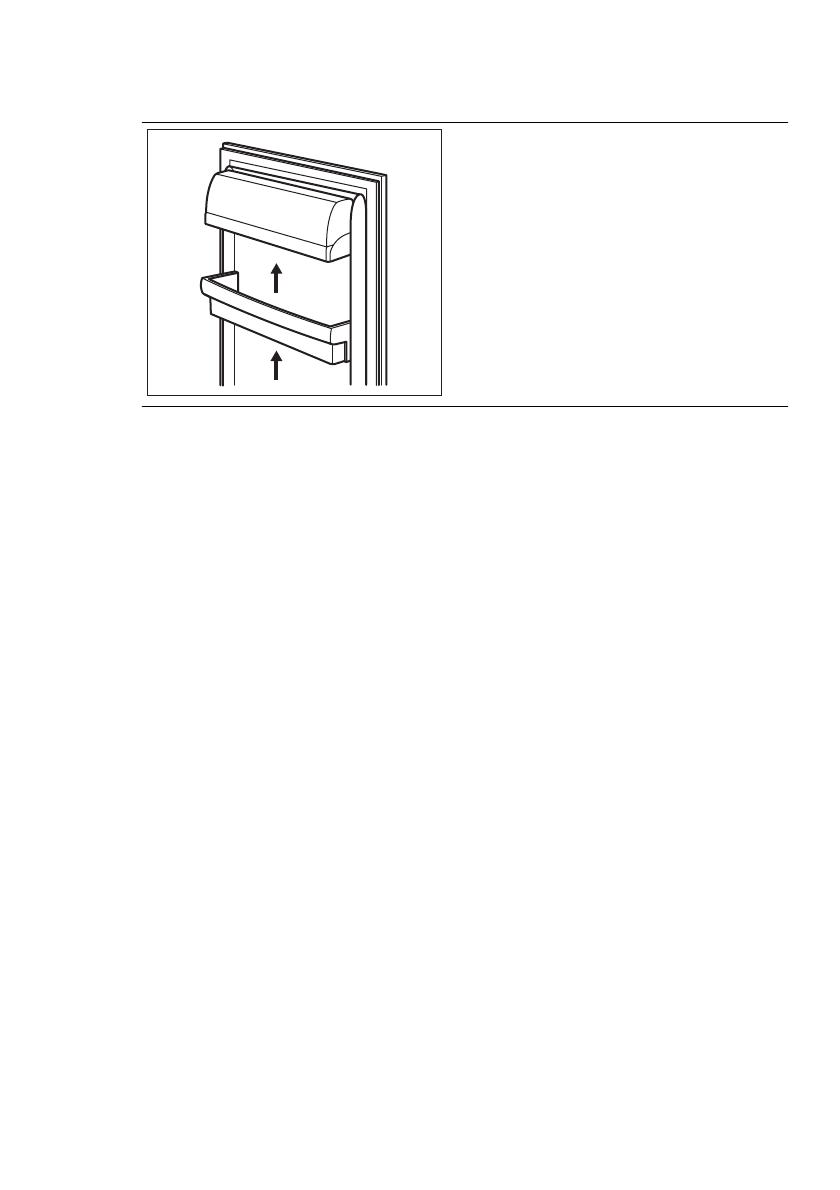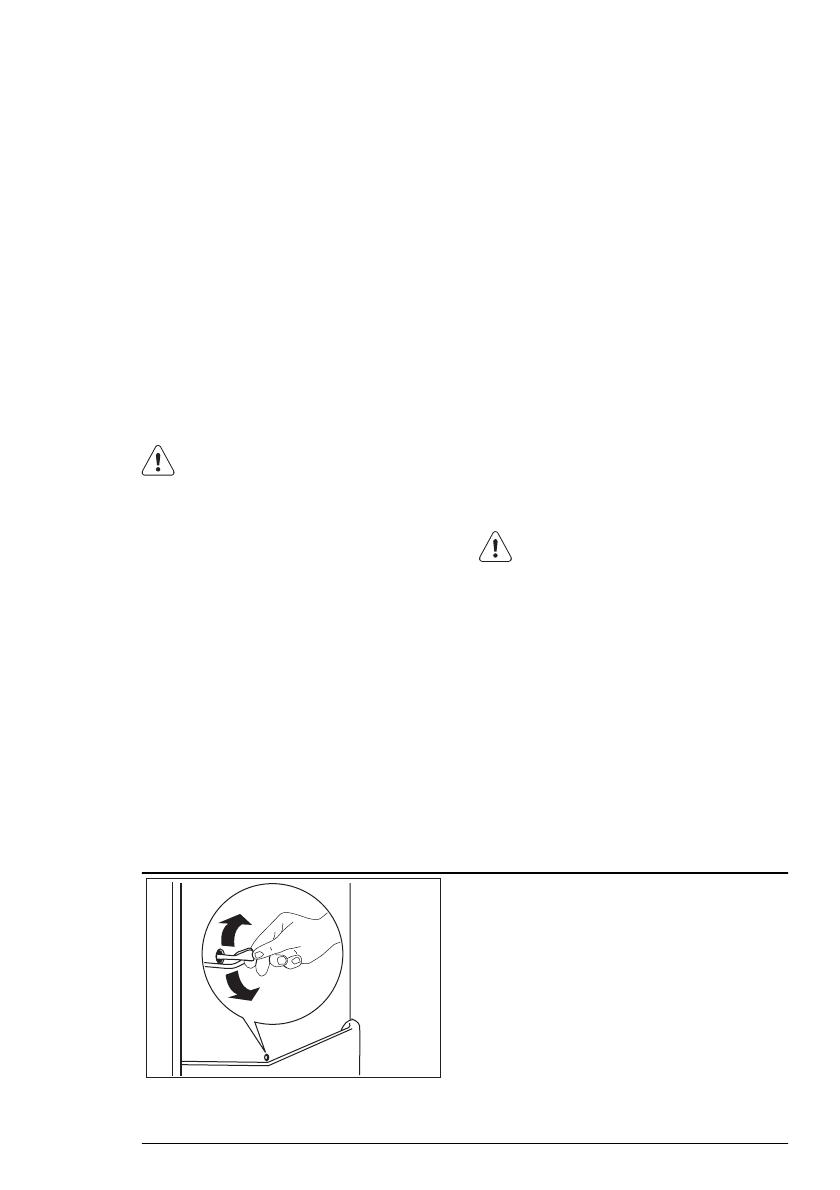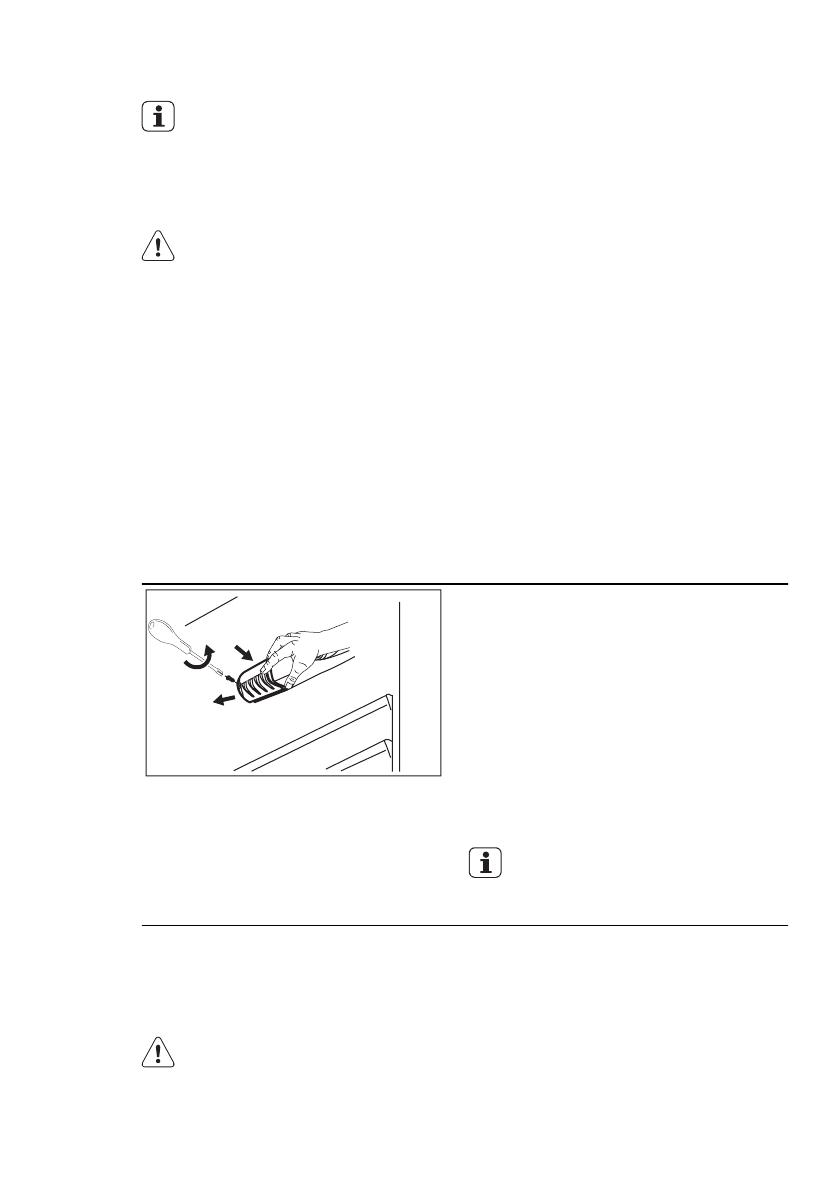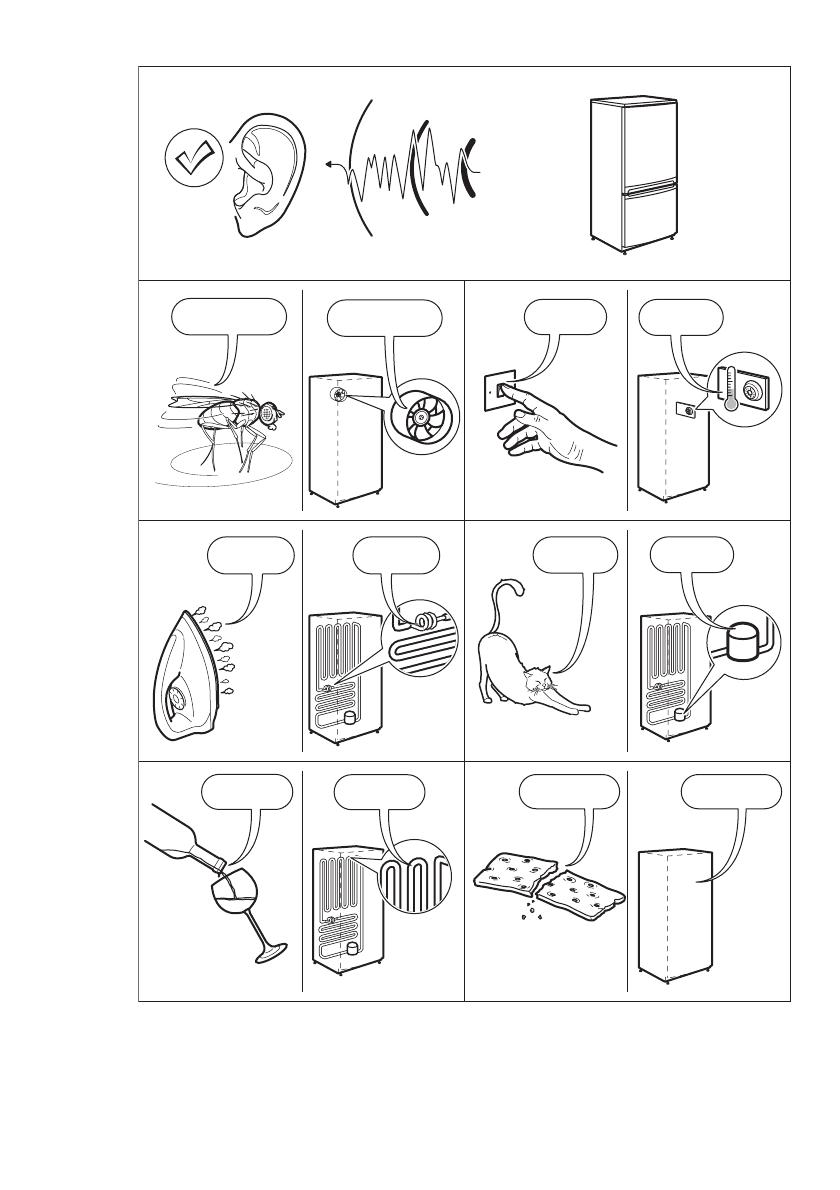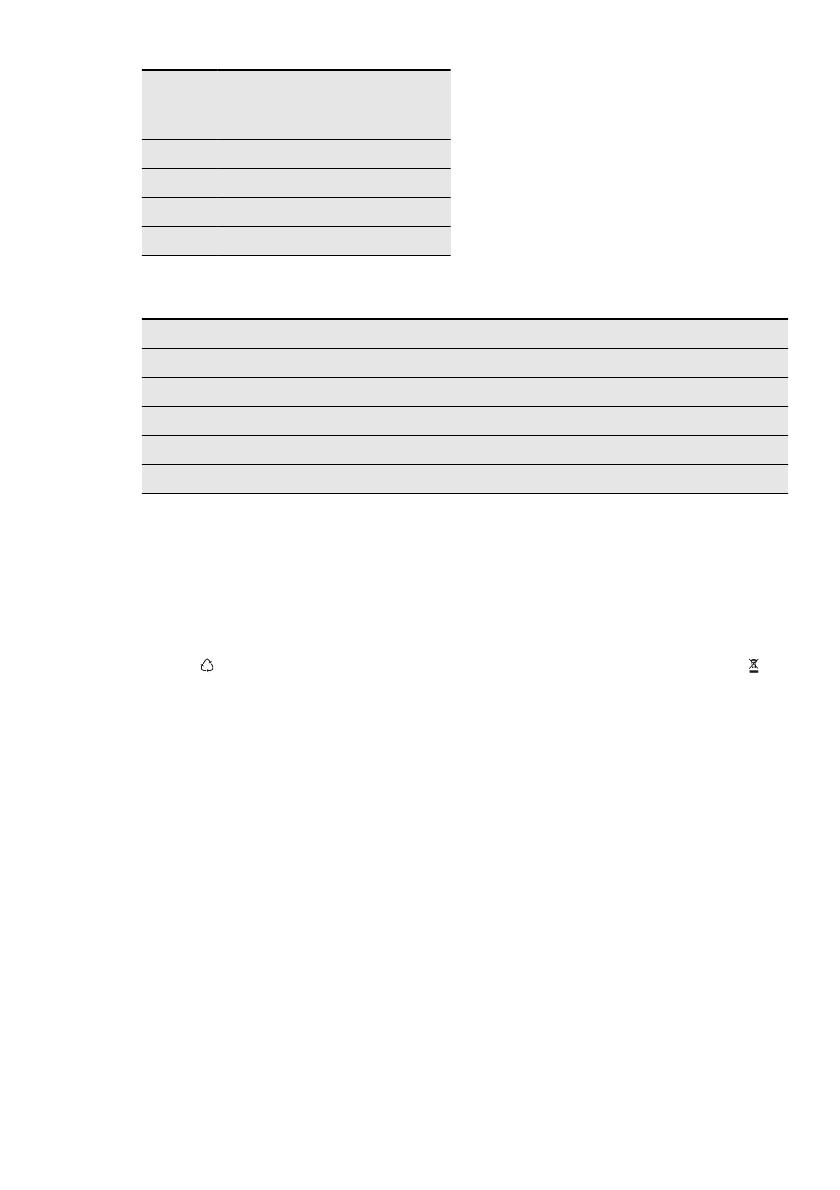
– Bed and breakfast type environ-
ments.
WARNING!
Risk of injury, burns, electrical
shock or fire.
• Use this appliance in a household en-
vironment.
• Do not change the specification of this
appliance.
• Do not put electrical appliances (e.g.
ice cream makers) in the appliance un-
less they are stated applicable by the
manufacturer.
• Be careful not to cause damage to the
refrigerant circuit. It contains isobu-
tane (R600a), a natural gas with a high
level of environmental compatibility.
This gas is flammable.
• If damage occurs to the refrigerant cir-
cuit, make sure that there are no
flames and sources of ignition in the
room. Ventilate the room.
• Do not let hot items to touch the plas-
tic parts of the appliance.
• Do not put fizzy drinks in the freezer
compartment. This will create pressure
on the drink container.
• Do not store flammable gas and liquid
in the appliance.
• Do not put flammable products or
items that are wet with flammable
products in, near or on the appliance.
• Do not touch the compressor or the
condenser. They are hot.
• Do not remove or touch items from
the freezer compartment if your hands
are wet or damp.
• When you remove an ice lolly from the
appliance, do not eat it immediately.
Wait a few minutes.
• Do not freeze again food that has
been thawed.
• Obey the storage instructions on the
packaging of frozen food.
1.4 Care and Cleaning
WARNING!
Risk of injury and damage to the
appliance.
• Before maintenance, deactivate the
appliance and disconnect the mains
plug from the mains socket.
• Do not use water spray and steam to
clean the appliance.
• Clean the appliance with a moist soft
cloth. Only use neutral detergents. Do
not use abrasive products, abrasive
cleaning pads, solvents or metal ob-
jects.
• Regularly examine the drain of the re-
frigerator and if necessary, clean it. If
the drain is blocked, defrosted water
collects in the bottom of the appli-
ance.
• This appliance contains hydrocarbons
in the cooling unit. Only a qualified
person must do the maintenance and
the recharging of the unit.
1.5 Internal light
• The type of light bulb or halogen lamp
used for this appliance, is only for
household appliances. Do not use it
for house lighting.
1.6 Disposal
WARNING!
Risk of injury or suffocation.
• Disconnect the appliance from the
mains supply.
• Cut off the mains cable and discard it.
• Remove the door catch to prevent
children and pets to be closed in the
appliance.
• The refrigerant circuit and the insula-
tion materials of this appliance are
ozone-friendly.
• The insulation foam contains flamma-
ble gas. Contact your municipal au-
thority for information on how to dis-
card the appliance correctly.
• Do not cause damage to the part of
the cooling unit that is near the heat
exchanger.
28
www.aeg.com




